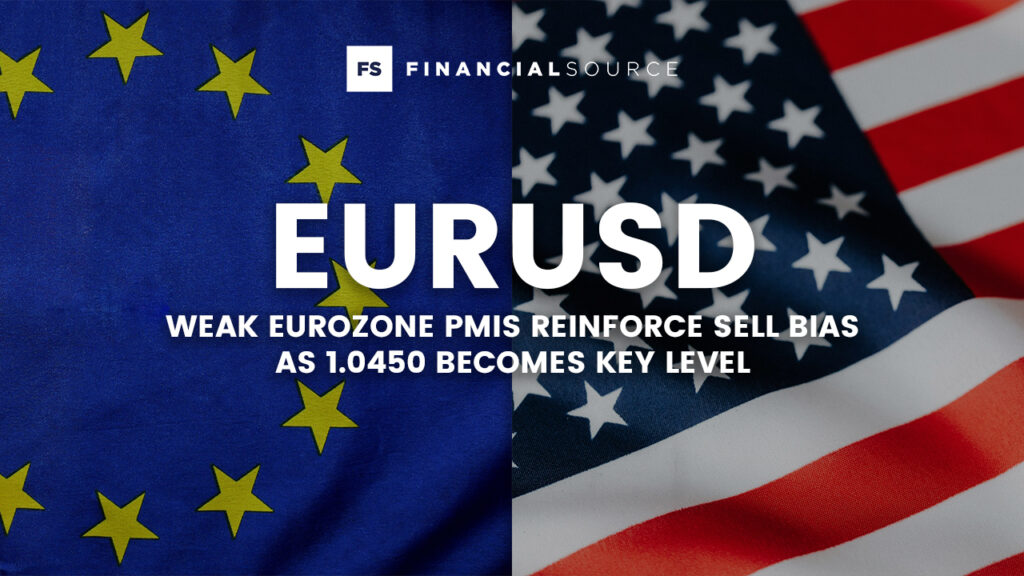EUR/USD: Weak Eurozone PMIs Reinforce Sell Bias as 1.0450 Becomes Key Level

The latest Eurozone PMI data paints a bleak picture for the eurozone economy, bolstering the case for further EUR/USD downside. With French, German, and Eurozone-wide PMIs coming in below expectations across the board, the euro remains under heavy pressure, and the bias remains firmly toward selling rallies.
Eurozone PMI Breakdown and Impact
This morning’s staggered PMI releases confirmed a deteriorating economic landscape in the eurozone:
- French PMIs (08:15):
- Manufacturing PMI: 43.2 (vs. 44.5 forecast)
- Services PMI: 45.7 (vs. 49.0 forecast)
- Composite PMI: 44.8 (vs. 48.3 forecast)
The French data was a significant miss, with both manufacturing and services activity contracting sharply, signaling a slowing recovery in Europe’s second-largest economy.
- German PMIs (08:30):
- Manufacturing PMI: 43.2 (in line with 43 forecast)
- Services PMI: 49.4 (vs. 51.6 forecast)
- Composite PMI: 47.3 (vs. 48.6 forecast)
Germany’s services PMI also dipped below expectations, with the composite PMI signaling continued economic stagnation in Europe’s largest economy.
- Eurozone PMIs (09:00):
- Manufacturing PMI: 45.2 (vs. 46.0 forecast)
- Services PMI: 49.2 (vs. 51.6 forecast)
- Composite PMI: 48.1 (vs. 50.0 forecast)
The eurozone-wide data confirms broad-based economic weakness, with the services sector falling below the critical 50.0 threshold, pointing to contraction.
EUR/USD Technical Outlook
The poor PMI data amplifies euro weakness, and the EUR/USD pair is now firmly in a sell-on-rallies mode. The 1.0450 level stands out as a critical zone of interest for sellers, where the pair may face renewed resistance. Persistent USD strength, driven by a robust labor market and expectations of higher-for-longer rates from the Fed, further supports this bearish outlook.
Fundamental Headwinds for the Euro
- Weaker Data Across the Board: The PMI misses across France, Germany, and the eurozone reinforce concerns about sluggish growth and an underwhelming recovery in services and manufacturing sectors.
- Geopolitical Risks: Ongoing concerns about the Russia-Ukraine crisis add to euro vulnerability, especially as energy prices and geopolitical tensions remain key risks for the eurozone.
- USD Resilience: The dollar continues to find support from stronger U.S. data and hawkish Fed expectations, adding additional pressure on EUR/USD.
Conclusion
The bearish bias on EUR/USD remains strong following the disappointing eurozone PMI data. While the pair could see temporary relief rallies, sellers are likely to dominate near 1.0450, with downside targets at 1.0400 and potentially 1.0350. The euro’s challenges are compounded by persistent USD strength and eurozone economic stagnation, making it increasingly difficult for the single currency to regain upward momentum.